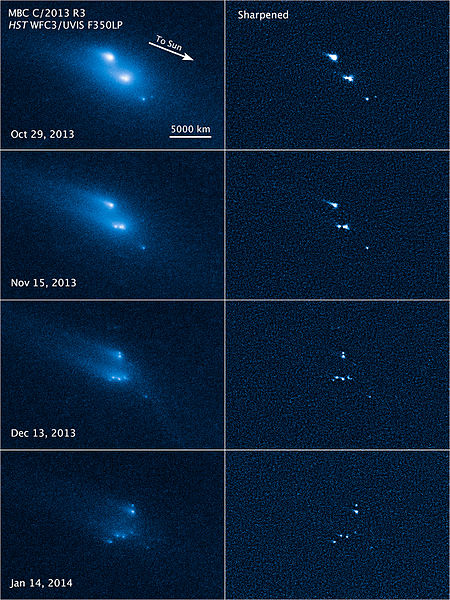Comet Elst–Pizarro is a body that displays characteristics of both asteroids and comets, and is the prototype of active asteroids. Its orbit keeps it within the asteroid belt, yet it displayed a dust tail like a comet while near perihelion in 1996, 2001, and 2007.As a comet it is formally designated 133P/Elst–Pizarro.
As an asteroid it is designated 7968 Elst–Pizarro.
7968 Elst–Pizarro imaged at La Silla Observatory in August 1996. The narrow tail is visible.
Active asteroids are small Solar System bodies that have asteroid-like orbits but show comet-like visual characteristics. That is, they show a coma, tail, or other visual evidence of mass-loss, but their orbits remain within Jupiter's orbit. These bodies were originally designated main-belt comets (MBCs) in 2006 by astronomers David Jewitt and Henry Hsieh, but this name implies they are necessarily icy in composition like a comet and that they only exist within the main-belt, whereas the growing population of active asteroids shows that this is not always the case.
Asteroid 596 Scheila displaying a comet-like appearance on 12 December 2010
Dust ejecta and tail from the aftermath of the Double Asteroid Redirection Test's impact on the asteroid moon Dimorphos, as seen by the Southern Astrophysical Research Telescope in 2022
Disintegration of asteroid P/2013 R3 observed by the Hubble Space Telescope (6 March 2014).
Asteroid 101955 Bennu seen ejecting particles on January 6, 2019, in images taken by the OSIRIS-REx spacecraft





